Hero Complex
Welcome to Heroic Week, where we talk all about the new mechanic from Theros. As is often the case when we have weeks dedicated to mechanics, I already explained the mechanic's design during the preview weeks. (Here, if you missed it.) Nonetheless, I need to discuss an aspect of heroic other than its origin. After some thought, I decided it would be interesting to look not at the mechanic itself but rather the impact the mechanic had on the set. So, for today, I'm going to examine not how a mechanic is made but how its existence warps the set around it. Obviously, I will be using heroic as my example.
- Ripples in the Pond
Most often, when I talk about a mechanic, I discuss how the set around it impacted it. In fact, in my preview-week article, I explained how heroic came about because we had certain parameters we were trying to meet. The flipside, though, is also an interesting story. What changed in the set because of heroic's inclusion? What this means is today's story doesn't end with heroic's design, but rather starts with it.
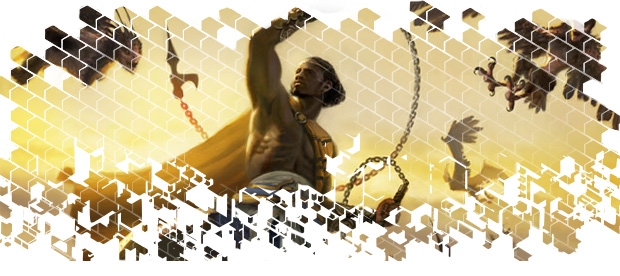
So, we knew we were doing top-down Greek mythology and I liked the idea of enchantments representing the influence of the gods. I also knew that I needed heroes and monsters and that I wanted them to build up over time. This meant that the set wanted a higher percentage of Auras than normal. Remember that bestow wasn't yet in the set. We already had devotion and an early version of monstrosity. Devotion, at the time, was basically just a renamed chroma. We hadn't yet stumbled upon the "devotion to color" tech, nor had we figured out we wanted to limit it to permanents on the battlefield. For monstrosity, we knew we wanted a mechanic that only went on monsters and made them more dangerous. At the time of heroic's creation we were just starting to mess around with the "once per game" activations. Scry, remember, didn't show up until development.
I introduced heroic as a mechanic that put +1/+1 counters on creatures when they were targeted by spells and we soon expanded that so there were different effects rather than just +1/+1 counters. We decided that +1/+1 counters would be a theme mostly in white and green. Blue and red were going to be more about generating spell effects, while black split the difference.
Once heroic was in the set, the design team had to step back and figure out what impact it was going to have. Let's walk through the impacts, shall we?
- The Number Crunch
The reason we chose to have heroic only be affected by spells and not abilities is that it's just too easy to repeatedly target a creature with an ability. For example, we wanted a heroic creature in blue that drew a card. (It started in common, as design is always optimistic it will work out, but it moved to uncommon as the card advantage, as it most often does, proved to be too powerful for common.) The problem with limiting heroic to spells, though, is that it just doesn't leave a lot of opportunity for it to happen in Limited. (Things work out a little better for Constructed but not all that much.)
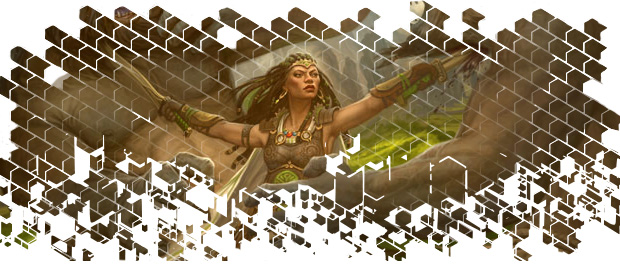
Let's go through the math. A normal sealed deck has forty cards. (For those who don't play Limited formats, deck limits are forty rather than sixty. Also, for those who enjoy old-time Magic trivia, when Magic originally started, deck limits for all decks were forty.) Usually, around seventeen of these cards are land. That leaves twenty-three cards. Usually, about sixteen of those twenty-three are creatures, which leaves you with seven noncreature, nonland spells. Some of these spells are going to have to be creature removal, but let's assume that you manage to cover your creature removal with your creatures. That still only leaves you with seven possible cards to trigger your heroic.
We wanted more heroic triggers and we also wanted more Auras. This is what led us down the path of trying to figure out how to get more Auras in your deck that also doubled as creatures. As I explained in my preview article, bestow didn't come about in Theros design but rather in Born of the Gods advanced planning (and yes, before the year is out, I am going to dedicate an article to finally explain what exactly advanced planning does and how it came about). While Theros was busy plugging away, I was working with my advanced design team to figure out how to evolve the Aura theme.
Billy Moreno came up with the idea of bestow creatures and it became apparent to everyone that bestow solved the math problem by making Auras that went into the creature slots. The only reason we found ourselves down this path, though, was the pressure that heroic had been exerting on the file.
- Working Together
Once we had bestow in the file, we then realized our next issue. The reason we had chosen heroic in the first place was that it worked well with Auras because Auras are targeted. The problem with creatures and the reason that you can't trigger heroic with a creature is that when you give a creature an "enters the battlefield" effect, what you are doing is creating a triggered ability. This means the heroic creature would be targeted by an ability rather than a spell and thus wouldn't trigger.
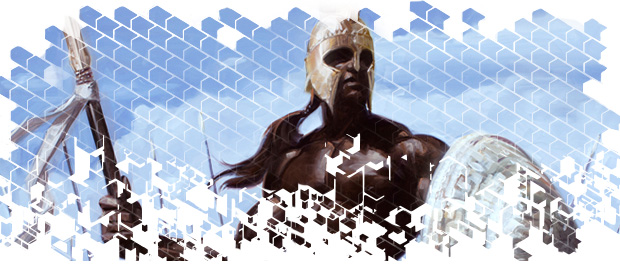
This was especially relevant for bestow because some version of bestow might not trigger heroic. I'll give an example. Imagine a world where a bestow creature entered the battlefield as a creature but had a triggered effect where you could pay mana to turn it into an Aura. This version makes it clearer that a bestowed creature that has its target destroyed before it can attach itself to its target isn't destroyed but rather reverts to a creature and stays on the battlefield. This implementation, though, would make the attaching of the Aura the result of an ability and not a spell.
But as the entire point of heroic was to interact with the Auras, it was important that the two keywords worked together. As such, one of the key deciders in figuring out how bestow was going to work was its ability to interact with heroic.
Often, when I discuss the evolution of a mechanic, I talk about it in isolation, but what I'm demonstrating today—that one keyword's evolution is shaped by the existence of one or more other keywords—is standard operating procedure. Elements of a set do not live in isolation and their interactions will shape how each is created and refined.
- Enable and Willing
When we create a mechanic, design is responsible not just for making cards with the mechanic but also for making cards that help enable it. In addition, we need to make sure that those two things synergize. I'll obviously use heroic as my example.
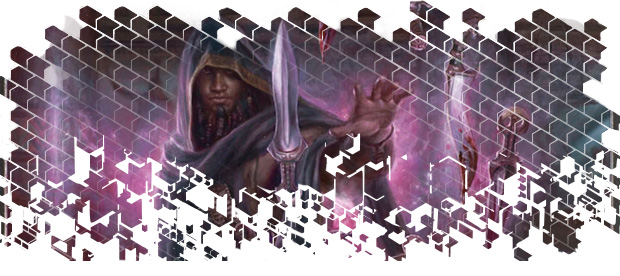
When we first made heroic, we figured out the various things we wanted heroic to do in each color. Then we set about to make sure each color also had enough cards you would want to use to trigger heroic. Then we looked at both halves of the combination and made sure they worked well together. Note that we didn't always put the synergy in the same color, because sometimes we were using it as a means to strengthen the definition of color pairs.
For example, green has heroic creatures like Staunch-Hearted Warrior and Centaur Battlemaster that get multiple +1/+1 counters when targeted by a spell, but we put more bestow creatures in white and black (they have two bestow commons to green's one, for instance) to encourage a green heroic deck to consider using one of those two colors.
In addition, we were also very conscious of spells that, while not intended for your creature (spells that normally are negative things you would want to use on your opponent or your opponent's creatures) had the ability to target your heroic creatures in a pinch. We like creating moments where players can feel clever, so we made sure those types of interactions could and would happen.
- Double Your Pleasure, Double Your Fun
Heroic also put pressure on the file in a different direction. I often talk about linear strategies, where certain cards beget other cards. What I don't talk about as often is that some cards are anti-linear, as they tend to put pressure to keep certain cards from getting into your deck. To a certain extent, this was true with heroic.
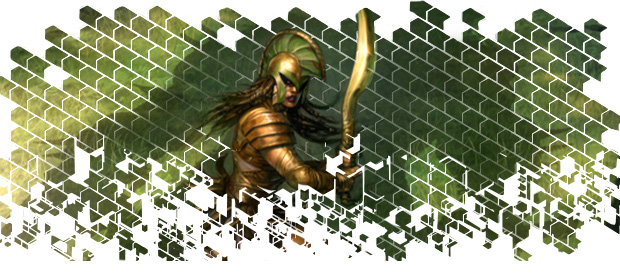
A heroic card requires some dedication. You have to have cards to trigger it. You're only going to have so many cards in your deck, as explained above. This discourages you from putting too many heroic cards in your deck because your ability to trigger all of them is pretty low. What early playtests showed was that if you decided to use heroic, you put enough in your deck to make sure that some would show up but not so many that you had multiple heroic cards on the battlefield at the same time.
The challenge I gave the design team was to figure out what we could do to encourage playing more heroic cards in the same deck. We experimented with different ideas but one solution was by far the cleanest: make cards that targeted multiple creatures. We toyed with spells that could target as many creatures as you wanted but in the end found that targeting up to two creatures made nice, simple cards we could stick at common. (Development would later move these cards to uncommon .)
We ended up making a cycle of spells that each targeted up to two creatures. Each was a spell that generated positive effects you would want to use on your own creatures. This was easy in some colors and a bit more challenging in others. We made them all instants so they could have an impact during combat.
- Go With The Flow
Putting all these pieces together wasn't enough. Development realized that design had put in lots of fun synergies but that they weren't coming up as often as development liked. To help encourage the interactions that design wanted, development looked for a way to help increase the card flow. That is, development gave tools to players to help manage what they were drawing, to help ensure the players were more often getting to the cards they needed.
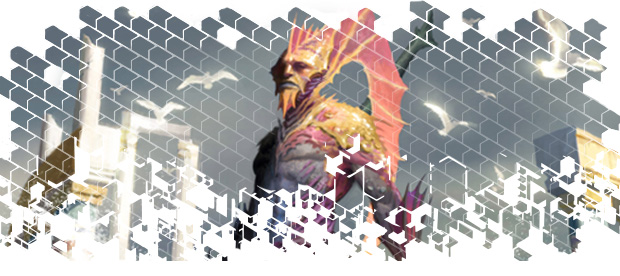
This addition was obviously the scry mechanic. It might not seem obvious at first blush that scry interacts with the other mechanics, but as you play you'll find, assuming you're playing heroic, that you're getting the heroic cards and the heroic enablers in the majority of the games because scry is helping enable it.
I often talk about the role of development, but I feel obliged to point out that the scry story is a good example of design setting a vision and development altering the set make-up to allow that vision to happen.
- All The Rest
I've talked about how heroic affected bestow and was one of the major factors that got scry added, but what impact did it have on the other two mechanics in the set, devotion and monstrosity? The impact on these two mechanics is a little more subtle.
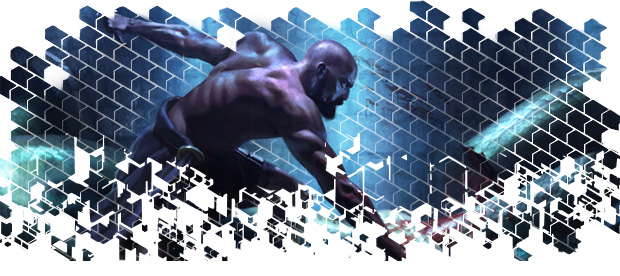
We'll start with devotion. The impact of adding heroic was that it pushed in the area where the two mechanics overlapped. That overlap? Auras. Heroic needed things to target it while devotion wants as many colored permanents on the battlefield as possible. Auras are the one thing that meet both requirements. The addition of heroic, which was influenced in the first place by a desire to help make Auras matter, ended up making devotion a little more Aura-centric. What this means is that when choosing effects for devotion, the design team was conscious that the style of game play would be one where creatures are built up into larger threats and thus chose effects accordingly.
The impact of heroic on monstrosity is even subtler. Heroic pushed for a build-up of creatures. This encouraged the use of monstrosity because it served as a parallel structure to get larger creatures in play. The idea was that while one side was building up heroes, the other side could be building up monsters. The key was to time it so the two upgraded roughly at the same time, to allow mighty battles in the mid- to late game. What this meant was the impact of heroic on monstrosity wasn't what the effects were, but rather the speed and tempo of the upgrade. If, in playtests, the heroes grew too fast, we would lower monstrosity costs. If the monsters got ahead too fast, that meant we had to raise the monstrosity costs.
The reason I wanted to point out the impact on devotion and monstrosity is that the influence of a mechanic isn't always loud. Often, it has quieter implications but still ones that are important for design and development to understand.
- House of Cards
My goal with today's article is to make you realize that the way I talk about mechanics in my column doesn't always convey one of the realities of design. Every element interacts every other element, meaning that any move you make in one area creates ripples in another. Tweaking one card often requires the tweaking of many cards. Changing one mechanic can often lead to the changing of numerous mechanics.
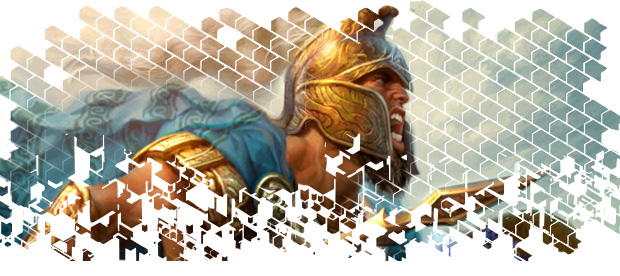
When you all see the set, it's what we call a locked state. Every card exists and what it does is absolute. But in design and development, the set is in flux, meaning any aspect could change. One of the reasons we take an entire year for design is that it takes time to carefully build up a set. We have to understand how each component interacts with each other, and as we fix one aspect we have to follow through and understand what else has to change to bring the set back to a balanced state.
I called the header to this section "House of Cards" in that the metaphor is a good one. Early in the building of a house of cards, you have to have multiple cards that balance against each other with just the right amount of force to keep each other up. Then, as you get a stable foundation, you can begin to build up your house of cards. Design is like this, except we have to often go back and change out cards from the foundation.
I hope today's article lets you examine Theros design from a different vantage point and see how heroic influenced, and was influenced by, everything around it.
As always, I am eager to hear any feedback on today's column. You can email me through the link below, respond to the thread of this article, or contact me through any of my social media (Twitter, Tumblr, Google+).
Join me next week as I examine the design of Commander (2013 Edition).
Until then, may you notice how all the elements of your own life interconnect.
- "Drive to Work #62 – Completion"
This is the third part of a three-podcast series talking about Communications Theory. I already talked about comfort and surprise, so I finish today with, aptly enough, completion.
- "Drive to Work #63 – 1993"
During this year's World Magic Cup, I did a video segment called "Twenty Years in Twenty Minutes," where I ran through Magic's history at the rate of one year per minute. Many said they would like to hear the longer version of this so I decided to make it a new mega-series. Today is the first in the series, the year of Magic's birth, 1993.
Multi |
- Episode 63: 1993 (11.6 MB)
- Episode 62: Completion (10.9 MB)
- Episode 61: Surprise (10.2 MB)
- Episode 60: Comfort (13.4 MB)
- Episode 59: Champions of Kamigawa, Part 3 (14.5 MB)
- Complete Drive To Work Podcast Archive



@maro254
Email Mark
Author Archive
Making Magic Archive
Working for Magic Ramp;D since October, 1995, Mark Rosewater is currently the head designer. His hobbies include spending time with his family, talking about Magic on every known medium (including a daily blog and a weekly podcast), and writing about himself in the third person.



